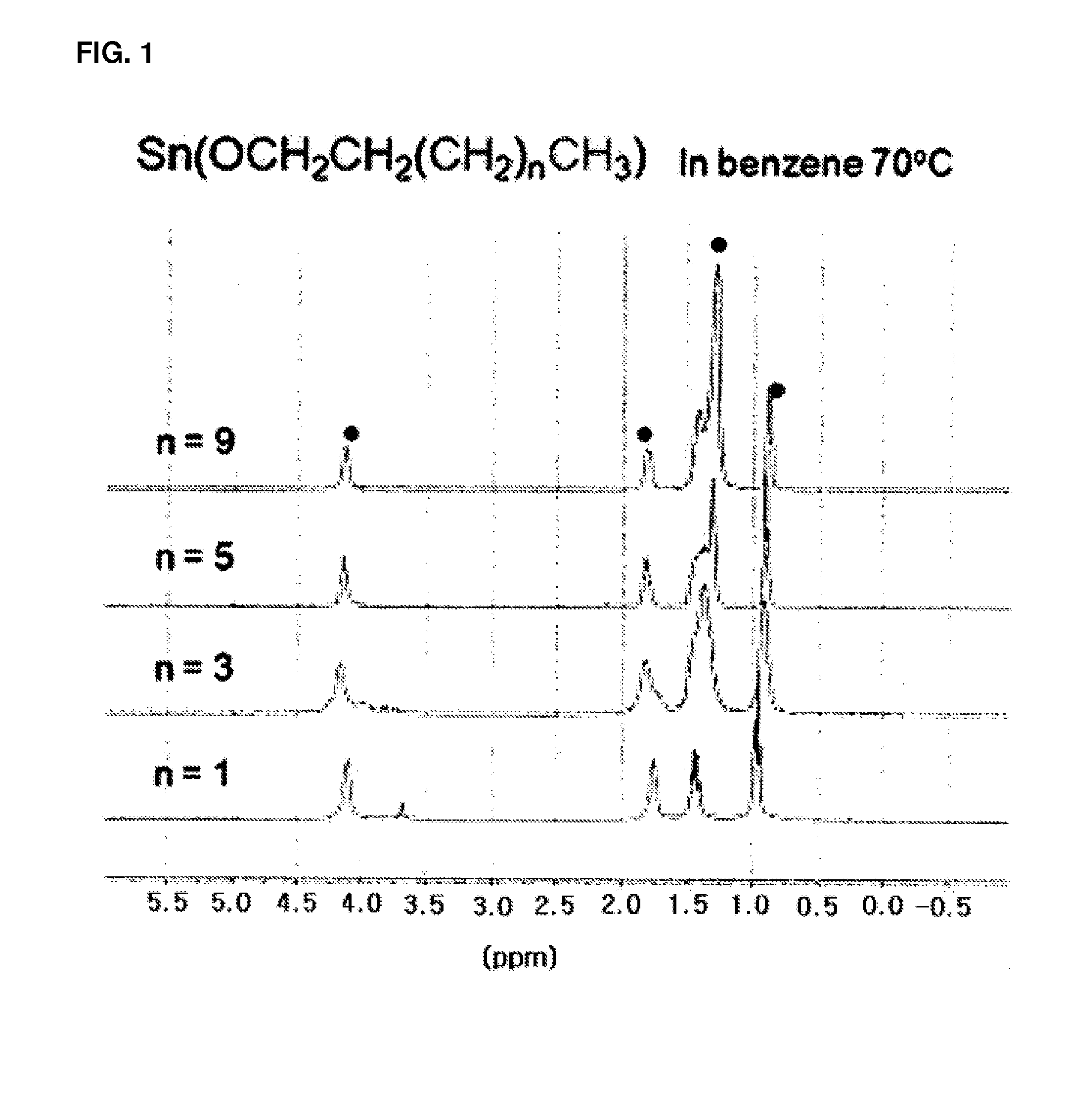Organotin compounds, preparation method thereof, and preparation of polylactide resin using the same
a technology of organic compounds and polylactide resins, which is applied in the field of organotin compounds, can solve problems such as limiting the range of their application
- Summary
- Abstract
- Description
- Claims
- Application Information
AI Technical Summary
Benefits of technology
Problems solved by technology
Method used
Image
Examples
synthesis examples
[0074]1. Experimental Method
[0075]The following experiment was carried out in a nitrogen atmosphere using a Schlenk method with a glove box and a vacuum manifold. The nitrogen gas was removed of oxygen with a copper catalyst and of water with drierite (CuSO4, Aldrich). As for solvents, methanol (MeOH), toluene (PhMe), and diethyl ether (Et2O) as anhydrous solvents were supplied from Aldrich. All the solvents were purified through an alumina column, dried on a type 4A molecular sieve, and degassed prior to use.
[0076]Tin(II) chloride, triethylamine, 1-butanol, 1-hexanol, and 1-octanol were supplied from Aldrich, and 1-dodecanol was supplied from TCI. These solvents were immediately used without a separate purification process. C6D6 and C6D5CD3 supplied from Cambridge Isotope Laboratories, Inc., were dried on a type 4A molecular sieve and then subjected to distillation under vacuum.
[0077]1H, 13C, and 119Sn spectra were acquired with a Bruker AVANCE 400.13 M...
experimental example
Preparation of PLA Using Tin(II) Alkoxide Catalyst of Synthesis Example
1. Experimental Method
[0099]The polymers were measured in regard to molecular weight and molecular weight distribution using gel permeation chromatography (GPC). The sample polymer was dissolved in chloroform, passed through a 0.45 μm syringe filter, injected into an instrument, and then analyzed with a polymer lab mixed C&C column and a refractive index (RI) detector (Waters 2414 RI). Here, a polystyrene sample was used as a reference material. The purity of the lactide monomer was 99.5%. The tin(II) alkoxide catalysts were prepared according to the synthesis examples, and the Sn(Oct)2 catalyst was supplied from Aldrich. The toluene solvent was purified by distillation in potassium / benzophenone.
2. Examples
example 1
(1) Example 1
Polymerization of Polylactide Using Tin(II) Hexoxide Catalyst
[0100]2 g (13.8 mmol) of a lactide monomer, tin(II) hexoxide (hereinafter referred to as Sn(OHx)2) (0.11 wt % toluene solution, 0.1 mL) was put in each of six 30 mL vials, which were then kept under vacuum for about 12 hours. The polymerization reaction was conducted at 180° C. for 2 hours and then interrupted in a defined time. Subsequently, the polymerization yield and the molecular weight were measured using 1H NMR spectroscopy and GPC. The results are presented in Table 3.
TABLE 3Polymerization Time (h)Yield (%)Mw (e−3g / mol)PDI (Mw / Mn)0.25241091.220.5421801.400.75352501.651653351.802824102.04
PUM
| Property | Measurement | Unit |
|---|---|---|
| temperature | aaaaa | aaaaa |
| mechanical strength | aaaaa | aaaaa |
| molecular weight | aaaaa | aaaaa |
Abstract
Description
Claims
Application Information
 Login to View More
Login to View More - R&D
- Intellectual Property
- Life Sciences
- Materials
- Tech Scout
- Unparalleled Data Quality
- Higher Quality Content
- 60% Fewer Hallucinations
Browse by: Latest US Patents, China's latest patents, Technical Efficacy Thesaurus, Application Domain, Technology Topic, Popular Technical Reports.
© 2025 PatSnap. All rights reserved.Legal|Privacy policy|Modern Slavery Act Transparency Statement|Sitemap|About US| Contact US: help@patsnap.com



